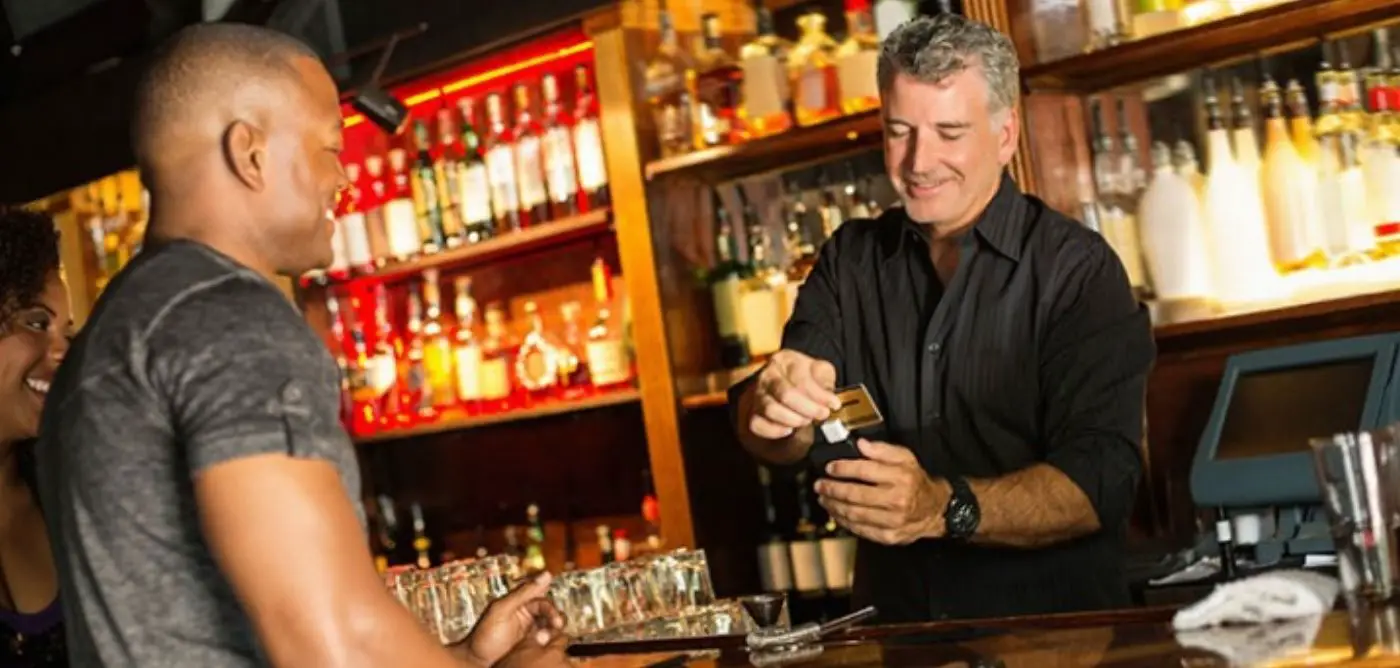Probably one of the most historically popular pastimes in human history is the gathering together at the old watering hole to socialize and mingle with one’s fellow compadres. It’s the one time when you can enjoy the taste of a more potent beverage and blend into a kind of atmosphere that can put everyone at ease. Of course, thousands of years ago, the best gathering place was literally “the watering hole,” but the transition to drinking at a tavern, pub, saloon or bar was about as natural to humanity as discovering a new place to eat. The tradition has become so much a part of life in many cultures it is now a rite of passage, a sign to the rest of the world that someone has passed into adulthood. Still, even though many are familiar with traditional bars, a few lessons can be learned when it comes to bar etiquette.
The Two Factors
If you’re one of those who do not make regular visits to a local bar, you would probably be surprised to learn that there is a particular set of behavioural rules that are expected to be followed when you’re there. This etiquette is based on two factors every bartender needs to know to maintain and control the environment of his or her establishment. One of those is managing the risk of overindulgence in the many spirits they offer, and the other insists on plain old hospitality. It doesn’t matter what the background or culture may be, or even the type of bar you’re working in; these two factors will always go hand in hand if you want your bar to continue to run smoothly so your patrons will feel comfortable enough to want to keep coming.
A Little Bar Etiquette History
Over the years, people deciding to go to bars has changed because of the historical events of the times or even the kind of drinks they plan to enjoy when they get there. If you take the time to look through the pages of the past, you’ll find drinking practices and rules of etiquette have been in place for thousands of years. Read the account of Jesus turning water into wine, and you’ll see there were definite expectations of not only the drinkers but also of the host of the wedding feast. Over the years, there were also restrictions placed on drinkers.
For example, women were not allowed to drink in public; some societies even restricted drinkers who held certain occupations. Teachers and those who worked with children were forbidden to participate in the age-old practice. And who could forget the years of prohibition and the stringent rules that followed those who dared to enter a speak-easy?
Its early days in the Wild Wild West found patrons had only one purpose when they entered the saloon: to drink as much as they could and still stand up. Back then, that goal was pretty easy to do since all drinks were hard liquor served straight up, and the effects of the strong amber liquid went directly to the head. In those days, it appeared that the patron was pretty much free to do whatever they chose. But even then, a free-for-all at a public saloon had some expectations regarding public behaviour. While the barkeep probably didn’t worry too much about public intoxication or the occasional barroom brawl, there was always a limit, which the sheriff would have to come and straighten out. Those who frequently practised violent behaviour could be restricted from disrupting business flow if necessary. Gamblers and gunslingers, two practices that went hand in hand, were often found spending the night in the “pokey” (the local jail) if they got too out of control.
But today, the bar you’re working in is not a saloon. Chances are, you’re working in a place that has not only acquired a particular reputation but also has to meet certain expectations for you to keep your patrons coming back. The bar experience is more about meeting new people, enjoying a game on the tube, or celebrating a special event. The drinks you serve are only the icing on the cake. When you know what your patrons expect when they sit at your bar, it is your responsibility as the bartender to court them and schmooze them with your expert hospitality successfully. By ensuring that each of your patrons adheres to the code of ethics for your type of bar, you’re in a better position to keep your business running smoothly so that everyone remains satisfied.
It’s All About Performance
True bartending is more than a profession; it is a work of art. You have to know more than the right ingredients to put in a drink. You must also know how to be a good psychiatrist, social consultant, mathematician, and put on the charm simultaneously. You need to put a little charisma to work in order to keep your customers happy while you’re multitasking. The better you are at learning how to manage your customers and keep them happy at the same time, the more likely they will return again and again. It may be the drinks that draw them in, but it will be the service and your ability to manage the environment by enforcing proper etiquette that will keep them coming back.
There are, of course, different codes of etiquette depending on the different types of bars you may be working in. Sports bars will tend to be loud and raucous when there is a game on; this is to be expected. But if your bar is located in a fine dining restaurant, there will be a more refined level of decorum that must be met. Learning exactly what to expect for the type of bar you plan to work in will keep your customers happy and help improve the number of tips you’ll receive. As a bartender, you’re in charge, and it is up to you to manage your customers in a way that will keep a balanced and cheerful vibe for your place. As you grow in your experience as a bartender, you’ll become more effective in maintaining the expected level of respect that all customers must pay to others and receive when they come to your bar.




